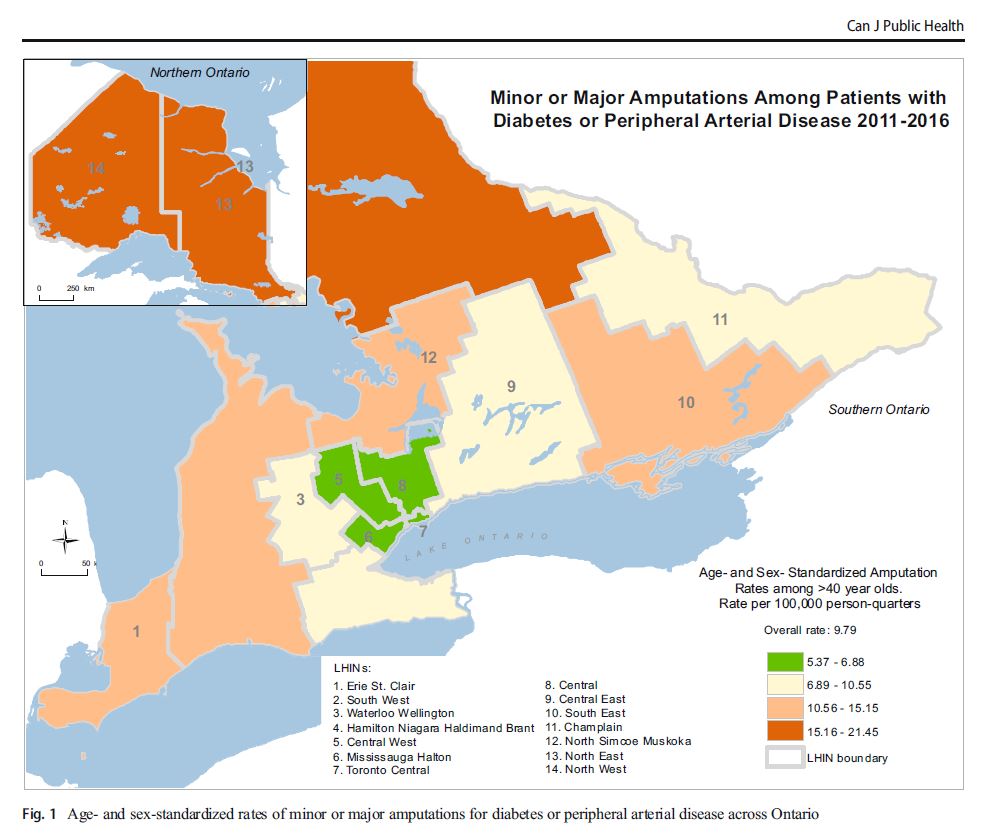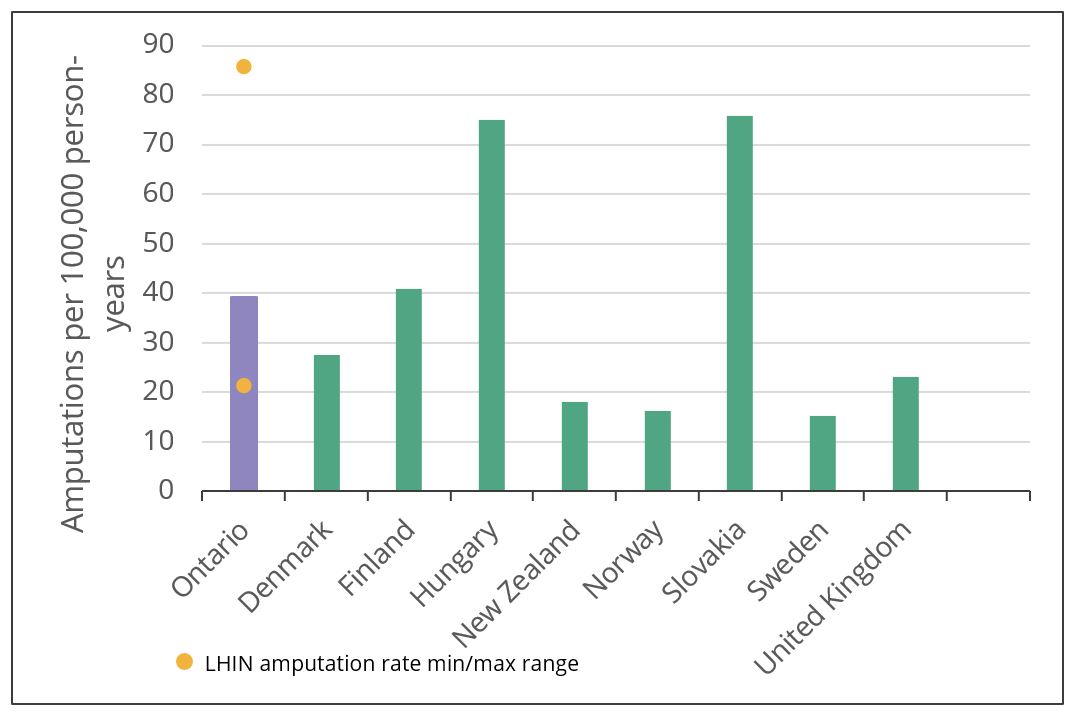
Vascular Lower-Limb Preservation Strategy
CorHealth Ontario, together with clinical experts and system partners, is beginning to develop a Lower-Limb Preservation (LLP) Strategy to address Ontario’s lower-limb amputation rate and wide regional rate variations.
Individuals living with diabetes or peripheral artery disease (PAD) are at increased risk of developing foot or leg wounds; wound healing in these populations is often reduced and can result in lower-limb amputation. Lower-limb amputation is a devastating complication of non-healing wounds, with more than 80% of non-traumatic amputations being preceded by a foot ulcer1. The cost and health resource utilization associated with treating individuals with diabetes or PAD that develop foot or leg wounds, and ultimately require limb-amputation, is significantly higher than treating individuals with diabetes or PAD without these complications.2
Recent publications of Ontario data indicate large regional variation in rates of major and minor, non-traumatic lower-limb amputation.3 Moreover, the average lower-limb amputation rate in Ontario is twice as high as other high-income jurisdictions with publicly funded healthcare systems.3,4 Most lower-limb amputations are preventable through early and organized specialized care and patient education. While there has been excellent work done locally in Ontario to reduce lower-limb amputation, there is need for a coordinated effort at a system level.3


The developed strategy will include development of frameworks and standards for clinical delivery models, educational toolkits for healthcare providers, patients and family caregivers, performance measurement recommendations and will advocate for policies to support successful implementation of the strategy.
December 2019 Articles:
- Letter from the CEO – Thank You!
- New Technologies Planning Committee: More Access to New Life Saving and Enhancing Cardiac, Stroke and Vascular Technologies
- Canadian Cardiovascular Congress and Canadian Stroke Congress Updates
- Endovascular Thrombectomy (EVT) Steering Committee and Telestroke Update
- Vascular Lower-Limb Preservation Strategy
- Aortic Valve Implantation (AVI) Model of Care Project
- Funding Initiative Updates: Coronary Artery Bypass Grafting Bundle and Stroke Bundle
- Measurement and Reporting Initiative
References:
1. Driver VR et al. The costs of diabetic foot: The economic case for the limb salvage team. J Vasc Surg. 2010; 52: 17S-22S
2. Diabetes Action Canada. Accessed 18 June 2019 https://diabetesaction.ca/diabetic-foot-inpatient-cost-analysis-in-toronto/
3. Hussain MA et al. A Call for Integrated Foot Care and Amputation Prevention Pathways for Patients with Diabetes and Peripheral Artery Disease Across Canada. Can J Public Health 2019; 110 (2): 253-255.
4. Behrendt CA et al. International Variations in Amputation Practice: A VASCUNET Report. Eur J Vasc Endovasc 2018; 56: 391-399.